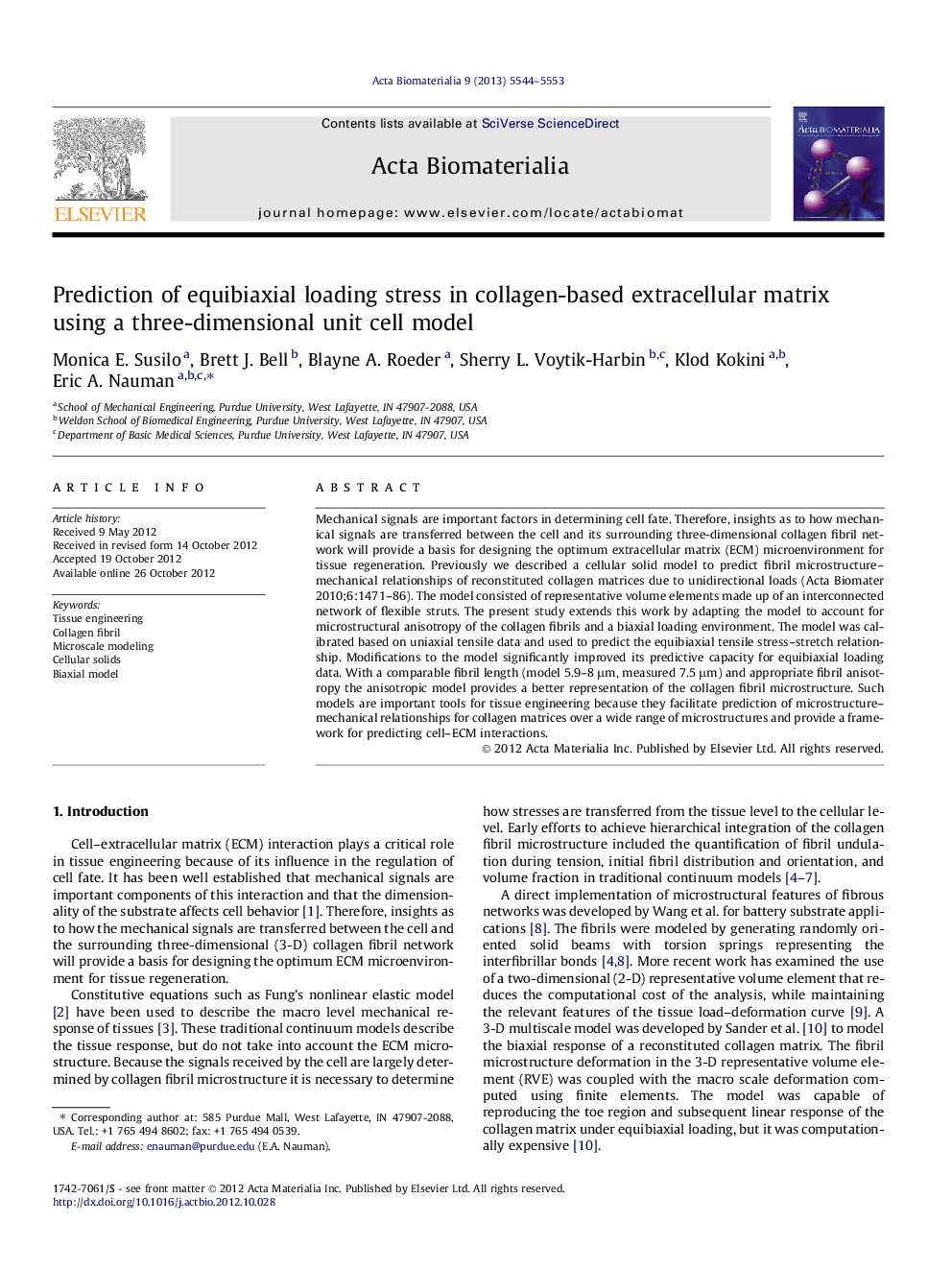| Article ID | Journal | Published Year | Pages | File Type |
|---|---|---|---|---|
| 10159999 | Acta Biomaterialia | 2013 | 10 Pages |
Abstract
Mechanical signals are important factors in determining cell fate. Therefore, insights as to how mechanical signals are transferred between the cell and its surrounding three-dimensional collagen fibril network will provide a basis for designing the optimum extracellular matrix (ECM) microenvironment for tissue regeneration. Previously we described a cellular solid model to predict fibril microstructure-mechanical relationships of reconstituted collagen matrices due to unidirectional loads (Acta Biomater 2010;6:1471-86). The model consisted of representative volume elements made up of an interconnected network of flexible struts. The present study extends this work by adapting the model to account for microstructural anisotropy of the collagen fibrils and a biaxial loading environment. The model was calibrated based on uniaxial tensile data and used to predict the equibiaxial tensile stress-stretch relationship. Modifications to the model significantly improved its predictive capacity for equibiaxial loading data. With a comparable fibril length (model 5.9-8 μm, measured 7.5 μm) and appropriate fibril anisotropy the anisotropic model provides a better representation of the collagen fibril microstructure. Such models are important tools for tissue engineering because they facilitate prediction of microstructure-mechanical relationships for collagen matrices over a wide range of microstructures and provide a framework for predicting cell-ECM interactions.
Related Topics
Physical Sciences and Engineering
Chemical Engineering
Bioengineering
Authors
Monica E. Susilo, Brett J. Bell, Blayne A. Roeder, Sherry L. Voytik-Harbin, Klod Kokini, Eric A. Nauman,
